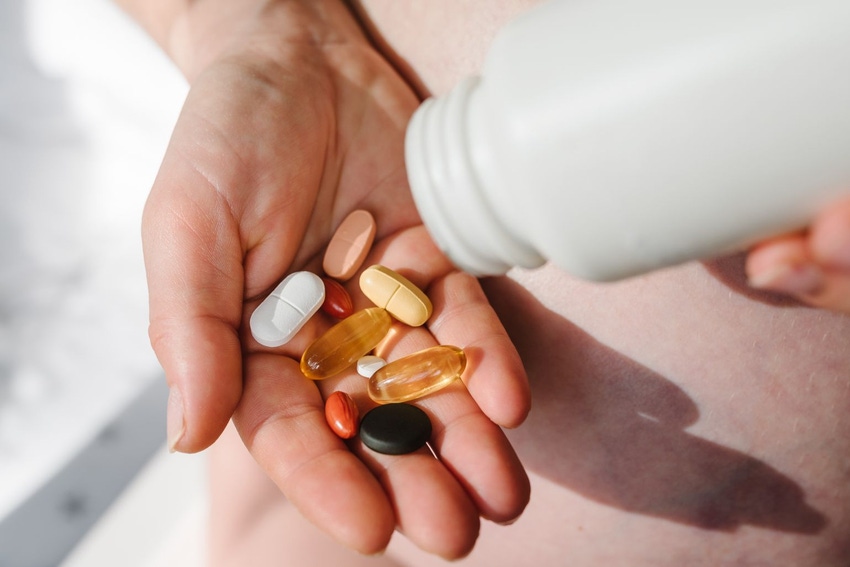Regulatory and quality expert identifies challenges facing FDA, supplements industry
K Srinivasa Reddy, Ph.D., director of OmniActive Health Technologies, India, offers a global perspective on the quality- and safety-related challenges facing manufacturers of supplements, following his review of FDA inspectional data.
January 26, 2024

At a Glance
- Supplement makers continue to face cGMP challenges.
- The extensive growth of manufacturing facilities is placing considerable pressure on FDA personnel.
- A collective effort is needed to go beyond the role of FDA to improve quality in supplements.
The U.S. Food and Drug Administration in FY23 carried out nearly twice as many international inspections as in the previous fiscal year. The increase may be linked to Covid-related travel restrictions in effect during that period.
Examining the FDA data below, it becomes apparent that a narrative remains consistent among brand owners and manufacturers: Over the past 12+ years of monitoring the dietary industry, little has evolved.
The persisting challenges over the years are strikingly similar to those observed today, encompassing concerns such as identity, purity, strength, composition, insufficient quality control (QC) department specifications, and more generally, violations of the cGMPs (current good manufacturing practices) that FDA is responsible for enforcing.
FDA FY23 data
1) Total number of FDA cGMP inspections — 501
2) Number of U.S. inspections — 461
3) Number of foreign inspections — 40
4) Total (and % of firms) issued Form 483 — 240 (48%)
5) Total (and % of firms) not issued 483 — 261 (52%)
6) Number (and %) of foreign inspections issued 483 — 24 (60%)
7) Number (and %) of foreign inspections not issued 483 — 16 (40%)
Source: FDA data obtained by Natural Products Insider through a Freedom of Information Act
The number of FDA inspections conducted on site, relative to the industry’s size, is remarkably low. Upon observing the broader landscape, emerging markets such as China, Korea and India, where I reside are actively involved in manufacturing ingredients and supplements and exporting them globally, including to the U.S. FDA in FY23 conducted a total of just 11 foreign cGMP inspections in China (4), India (3) and Korea (4), according to FDA data.
FDA enforcement lacks consistency across the board, reflecting the current state of affairs as well as the past. This can be attributed to the proliferation of facilities, spreading across various locations globally. The extensive growth of manufacturing facilities is placing considerable pressure on FDA personnel, given the agency’s limited funds for travel and inspections, and the challenge of keeping pace with rapidly changing industry trends. Identifying and penalizing bad actors becomes increasingly challenging under these circumstances.
FDA appears to loosely advocate for a predefined product specification that encompasses identity, purity, strength and composition.
However, FDA’s framework poses several challenges outlined below.
QC testing
A surge in regulations is emerging from both industry and regulatory agencies. It’s challenging to find time to focus on crucial topics, such as the absence of analytical methods for all ingredients and products in the marketplace. Even if methods are available, doubts arise about the scientific integrity of those listed analytical methods in the public domain. Furthermore, the lack of standardization poses a hurdle for QC testing methods to be accessible to manufacturers and third-party testing labs. A viable solution is to publish them as monographs, and various agencies like USP (US Pharmacopeia), EP (European Pharmacopeia), AHPA (American Herbal Products Association) and WHO (World Health Organization) are moving in this direction. However, the progress is notably slow compared to the pace of industry, whose multitude of products in various combinations are continuing to flood the marketplace.
Safety
The safety of supplements remains in question. Due to economic motives or for other reasons, including lack of adequate QC procedures, many products are deliberately or unintentionally introduced with controlled substances, banned ingredients, micro-loaded molds and pathogens. A notable example is Chinese star anise, which is renowned for its health benefits. In contrast, Japanese star anise is highly toxic and can be fatal if mistaken for the Chinese variety. Any mislabeling of these two could pose a severe threat to public health.
It is strongly advised that all manufacturers thoroughly review their manufacturing and quality assurance processes. Additionally, it is crucial for dietary supplement manufacturers not only to test the assay and purity of their final products for consistency but also to qualify suppliers and assess sources of ingredients. This is particularly important as raw ingredients may already be contaminated due to changing global warming patterns.
Stability and shelf-life Issues
Manufacturers incorporate overages in their products to ensure stability until the expiration date, a practice generally accepted by regulators. However, the permissible percentage of overages is not clearly defined, requiring manufacturers to conduct a thorough stability evaluation as outlined in International Conference on Harmonisation's Quality guidance for Stability (ICH Q1).
And in numerous cases, the primary compound responsible for the biological activity in a supplement remains unidentified. Additionally, there is a lack of research on the stability of these compounds, their identity, and the potential activity and safety of any breakdown products. This gap necessitates a more in-depth scientific scrutiny by FDA.
Lack of skilled manpower and ethical responsibility of manufacturers/brand owners
Creating scientifically accurate specifications poses a challenge, requiring appropriate methods, instrumentation for testing and qualified experts to oversee this work. Investing in training and nurturing the right skills among personnel is crucial for propelling the industry forward. Owners of firms and brand owners must demonstrate responsibility and transparency in producing supplements that align with public health goals.
Way forward
The U.S. Food and Drug Administration faces challenges in effectively enforcing the spirit of 21 CFR 111 and 21 CFR 117 (for ingredients). This stands in contrast to FDA’s enforcement in the pharmaceutical and biologics sectors. In comparison, agencies like the Australian TGA (Therapeutic Goods Administration) route certain complementary medicines through the Pharmaceutical Inspection Co-operation Scheme (PIC/S), a non-binding, informal cooperative arrangement between regulatory authorities in the field of GMP or medicinal products for human or veterinarian use. Adopting a similar or more rigorous level of enforcement, akin to the PIC/S model, could help in deterring bad actors within the industry.
As supplements fall under the subset of food in the U.S., post-marketing inspections predominantly occur. However, before FDA has the chance to inspect a facility, a product may already pose a significant risk to public health if it’s been introduced to the market and fails to meet quality and safety criteria.
Similarly, the Indian regulatory body, FSSAI (Food Safety Standard Authority), primarily issues manufacturing licenses, approves label/artwork, and product dossiers. However, the FSSAI also faces budget and staffing limitations to consistently enforce regulations in line with global best practices.
Addressing these challenges necessitates a collective effort from ingredients manufacturers, supplement manufacturers, regulatory agencies, public pro-NGOs (non-governmental organizations) and the scientific fraternity.
A shared responsibility is essential to go beyond the role of regulatory agencies like FDA merely acting as enforcers, and instead, proactively safeguard public health. This collaborative approach becomes a vital prophylactic game-changer to prevent issues highlighted by regulatory observations and enhance overall public health protection.
About the Author(s)
You May Also Like






.png?width=800&auto=webp&quality=80&disable=upscale)